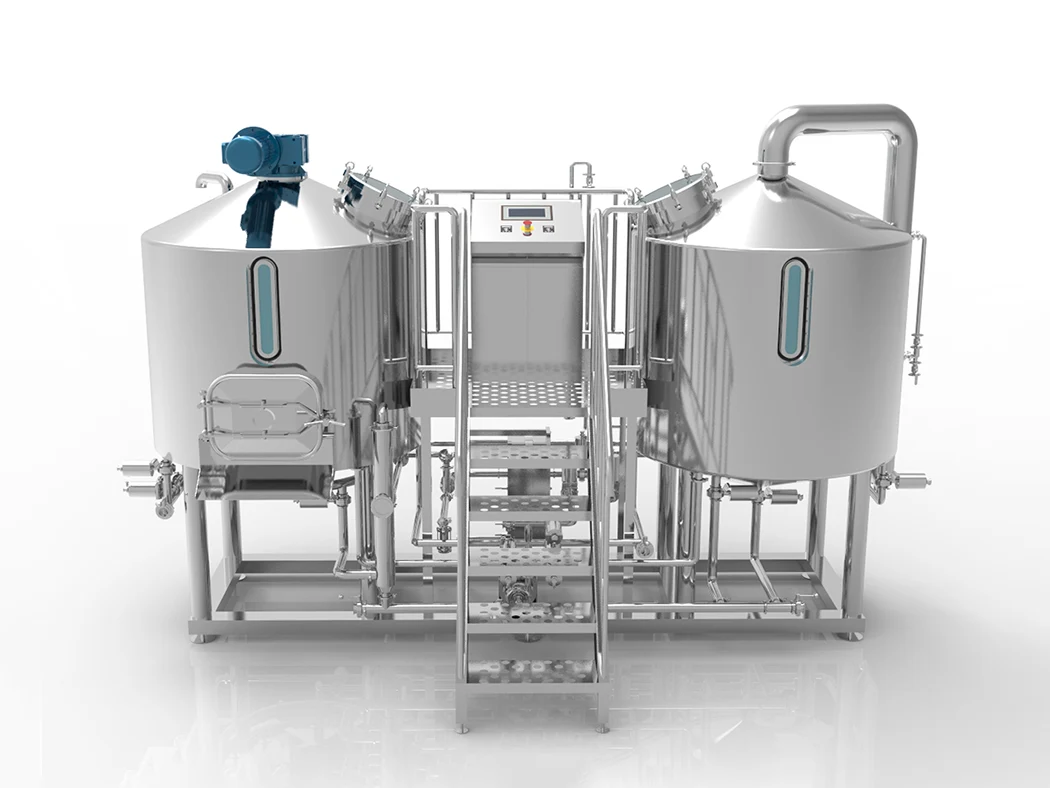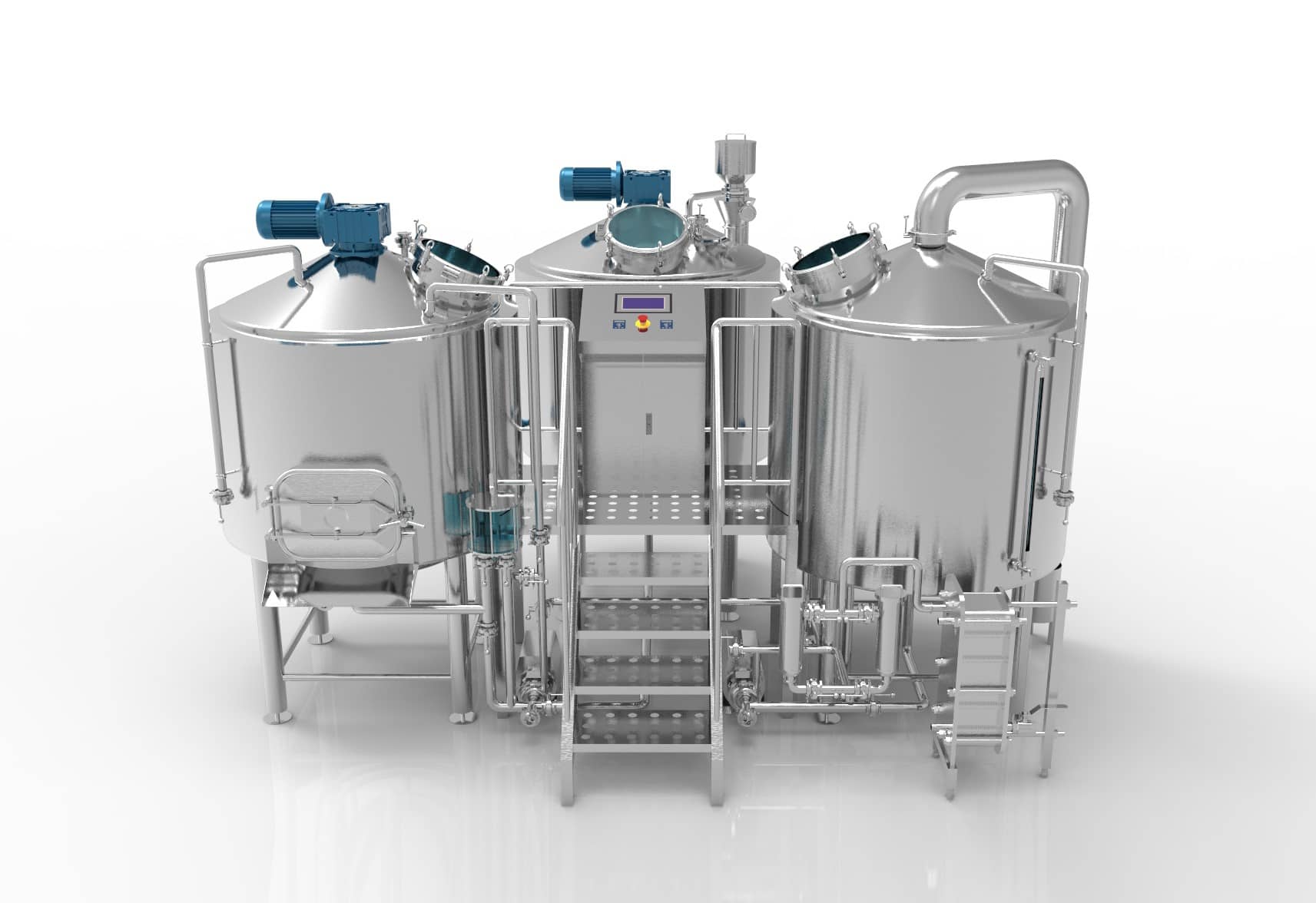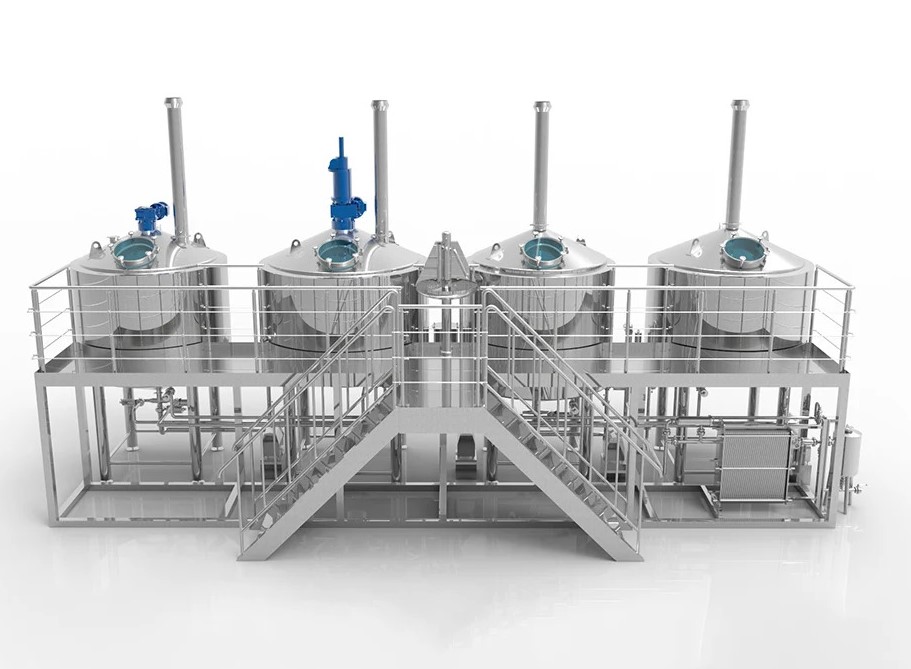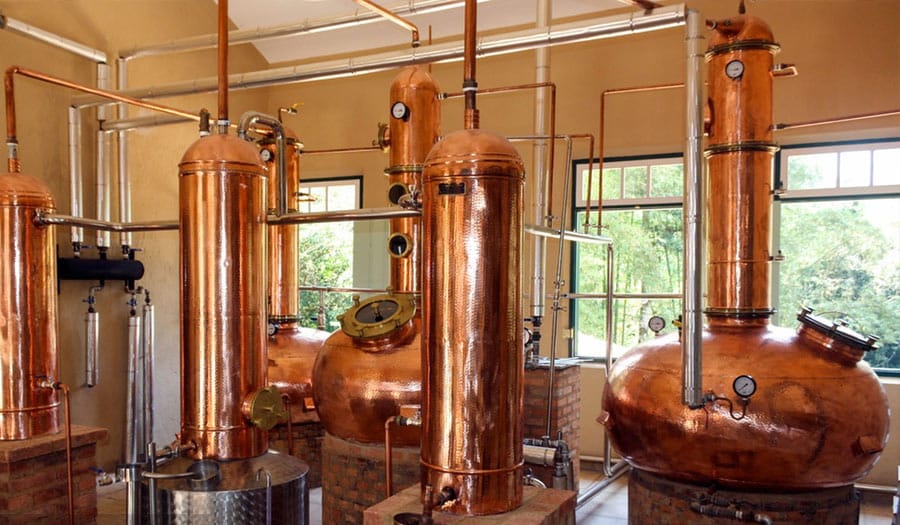Distilling equipment plays a vital role in many fields such as chemistry, food processing, and alcohol production. As a technology for separating mixtures, distillation is widely used in processes such as liquid purification and concentration. Maintaining and cleaning alcohol stills is essential to producing high-quality spirits and ensuring the life of distilling equipment. Whether you use a pot still, column, or a specialized skill such as a gin or whiskey, following the correct maintenance methods will improve efficiency and ensure flavor integrity.
Learn about distillation equipment
Copper stills
Copper stills are among the most common and popular equipo de destilación in the brewing industry, especially in the production of high-end liquors such as whiskey and brandy. Copper’s advantages are mainly reflected in its good thermal conductivity and excellent heat transfer efficiency, which make the distillation process more uniform and efficient, thereby improving the distillation speed and product quality. In addition, copper can react chemically with sulfides in the distillate to remove bad odors and impurities, ensuring the purity and taste of alcohol.
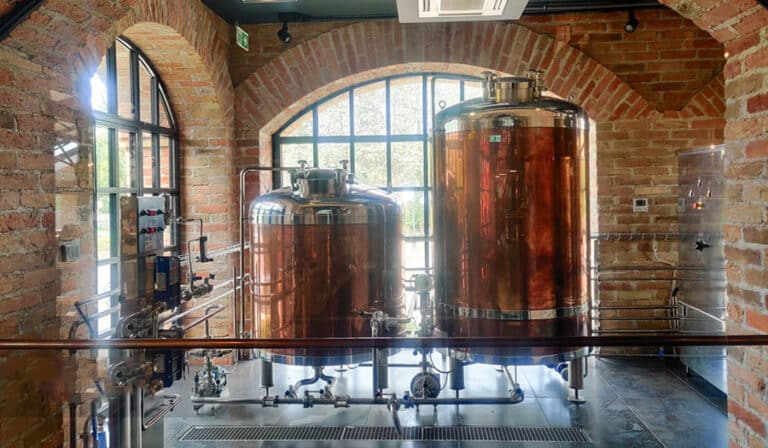
Tower stills
Tower stills are different from traditional pot stills. They are designed for industrial, continuous distillation processes. Tower stills are usually used in commercial breweries and large-scale production, especially in the fields of alcohol production and petrochemicals. They can process large amounts of raw materials in a short time and perform efficient separation. The structure of the tower still includes multiple trays or packed towers, each tray or packing has a different temperature and pressure, which can separate the components in the liquid according to the difference in boiling point.
Pot Stills
Pot stills are one of the most traditional distilling equipment, usually used for small batch production or traditional alcoholic beverages, especially in the production of drinks such as whiskey, brandy, and rum, and are still widely used. The pot still consists of a large pot and a condenser, and its working principle is based on the process of hot steam cooling through the condenser to form a liquid. Unlike tower stills, pot stills are suitable for batch operations, operating a fixed amount of raw materials at a time.
Moonshine Stills
Moonshine stills are usually used for home brewing or small-scale production, especially for those who like DIY brewing enthusiasts, they are ideal equipment. There are many different versions of moonshine stills, from the simplest models to high-end equipment with complex structures. Regardless of their complexity, the common feature of moonshine stills is that they can provide a relatively smooth distillation process while retaining the flavor components of alcohol, which is suitable for brewing small batches of homemade wine.
The basic structure of distillation equipment
- Distillation pot: The distillation pot is the core part of the distillation equipment, responsible for heating the liquid raw material and evaporating it into steam. The distillation pot is usually made of high-temperature and corrosion-resistant materials such as stainless steel and copper.
- Condenser: The function of the condenser is to cool the evaporated steam and condense it into liquid again. The condenser can be water-cooled or air-cooled, usually made of copper or stainless steel.
- Steam pipe: The steam pipe connects the distillation pot to the condenser and is responsible for guiding the flow of steam.
- Fractionation tower: The fractionation tower is used to separate different volatile components during the distillation process, especially in complex distillation processes, which can further improve the purity of the distillation product.
- Valves and joints: Used to control the pressure and flow during the distillation process to ensure the stability of the distillation process.
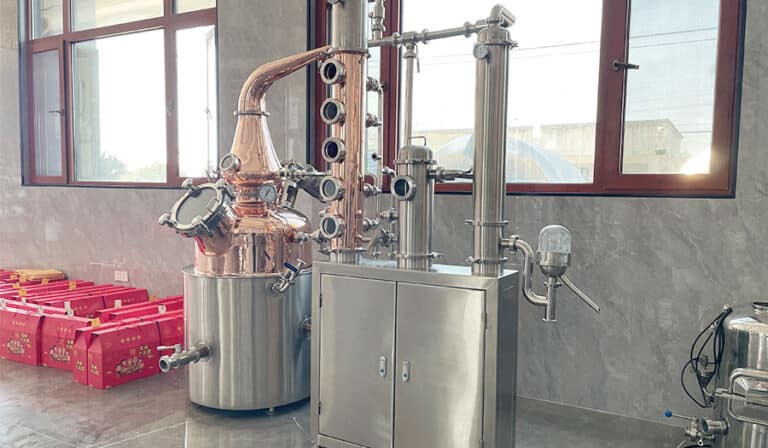
Common contaminants in distillation equipment
Alcohol and organic residues
During the distillation process, alcohol and other organic matter may form residues in the distillation pot, condenser, and pipes. If these residues are not cleaned up in time, they will affect the effect of the next distillation and even cause odor or impure products during the distillation process.
Coke and coke
In the distillation pot, high-temperature heating may cause certain organic matter (such as sugar, protein, etc.) to coke, generating coke substances that are difficult to remove. Coke is deposited on the surface of the equipment, which is not only difficult to clean, but also affects the thermal efficiency of the equipment, resulting in energy waste.
Scale and mineral accumulation
Minerals in water (such as calcium, magnesium, iron, etc.) will form scale in the distillation pot, condenser, and pipes during the distillation process. Scale not only affects the thermal efficiency of the equipment but also causes blockage inside the equipment, which may cause equipment failure in severe cases.
Microbial contamination
After long-term use, distillation equipment may cause the growth of microorganisms such as bacteria, mold, and yeast due to improper operation or an unclean storage environment. These microbial residues not only affect the quality of the distilled product but also may cause corrosion of the equipment.
How to clean a still?
- Remove the seal between the boiler and the column cap skirt.
- Completely remove the still from the still.
- Rinse the column with clean water and scrub the inside of the column with a glass bottle cleaning brush (a good size works very well).
- Once the column is clean, wipe it dry and store it in a safe, dry place.
- Put on your gloves again and pour out any remaining cleaning solution.
- Fill the still with 1/2 gallon of clean water and scrub the still with the brush.
- Pour out the water and rinse it again with clean water.
- Dry thoroughly and store in a cool, dry environment.
They still need to be wiped dry after cleaning. The still should be wiped dry with a clean rag and then turned upside down to drain any remaining water. Once the still is completely dry, store it in a dry, safe place. Store the still where it will not fall or otherwise get damaged.
There are also some special cleaners on the market for stills that are highly effective at removing various types of dirt while being gentle on the materials used. When using these cleaners, follow the product instructions carefully and avoid overuse.
Precautions during cleaning
- Avoid using strong acid or alkaline detergents: Strong acids or alkalis may corrode the material of the distillation equipment and shorten the life of the equipment. Therefore, it is very important to choose a detergent of appropriate concentration.
- Regular cleaning: Regular cleaning of the equipment can effectively prevent the accumulation of dirt and prevent the accumulation of dirt from becoming difficult to clean, affecting the operation of the equipment and product quality.
- Ensure that the equipment is dry: During the cleaning process, it is necessary to ensure that the inside of the equipment is completely dry to prevent moisture from remaining and causing corrosion or bacterial growth.
- Check the equipment: After each cleaning, check whether the various parts of the equipment have signs of wear, damage, or aging, and repair and replace them in time.
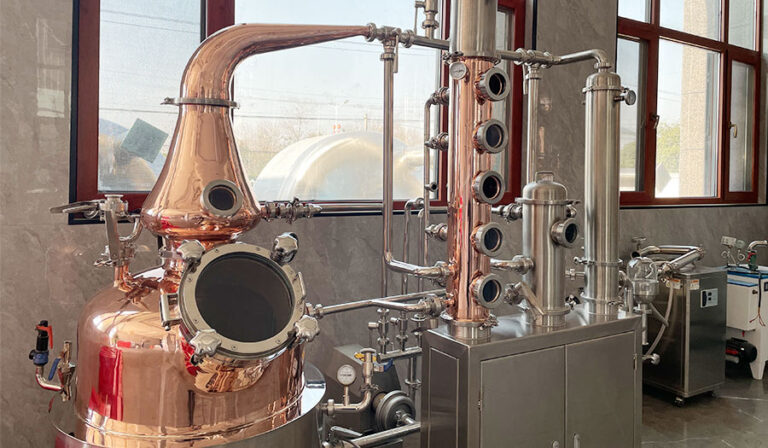
What are the benefits of cleaning your still regularly?
Copper oxidizes when exposed to the elements, changing color to bluish-green and eventually almost black. Used copper metal will naturally develop a patina over time. Some people maintain the natural color of copper by regularly cleaning, polishing, or coating the copper with benzotriazole. Others are not bothered by the copper darkening, although it is only a cosmetic issue.
Stainless steel stills are different, as dirt and stains will show up immediately on the surface. Stainless steel is easy to clean, but it needs to be cleaned regularly to stay clean.
The inside of the still, whether copper or stainless steel, needs to be cleaned regularly to ensure safety and purity to produce the distillate. In addition, when copper stills are clean, they are more successful in removing sulfides.
PREGUNTAS FRECUENTES
Why do you need to clean the distillation equipment regularly?
During long-term use, the distillation equipment will accumulate various impurities, sediments, and scales, which may not only affect the distillation efficiency but also the quality and purity of the product. Especially for wine distillation, the presence of impurities may cause the taste of the wine to be impure, affecting the flavor and taste of the final product.
How to clean a copper distiller?
Copper distiller is popular for its good heat conductivity and ability to remove impurities, but it is easy to oxidize and lose its luster, which requires special cleaning methods. The surface of the copper may form an oxide layer due to high temperature and long-term use. This oxide layer not only affects the appearance but also may reduce the heat transfer efficiency. Therefore, the copper distiller needs to be cleaned regularly.
How to clean a tower distiller?
A tower distiller is usually used for large-scale production. Its cleaning process is more complicated, requiring careful cleaning of each component in the tower to ensure distillation efficiency. The sediment and scale accumulated in the tower may cause the distillation process to be not smooth and even affect the separation effect.
Resumen
The cleaning of distillation equipment is not only for the appearance of neatness but also for distillation efficiency and product quality. Whether it is a copper still, a tower still, a pot still, or a moonshine still, regular cleaning and maintenance is the key to ensuring the equipment runs well and improving the distillation effect. Mastering the correct cleaning method can not only extend the service life of the equipment but also ensure the purity and high quality of the product.

